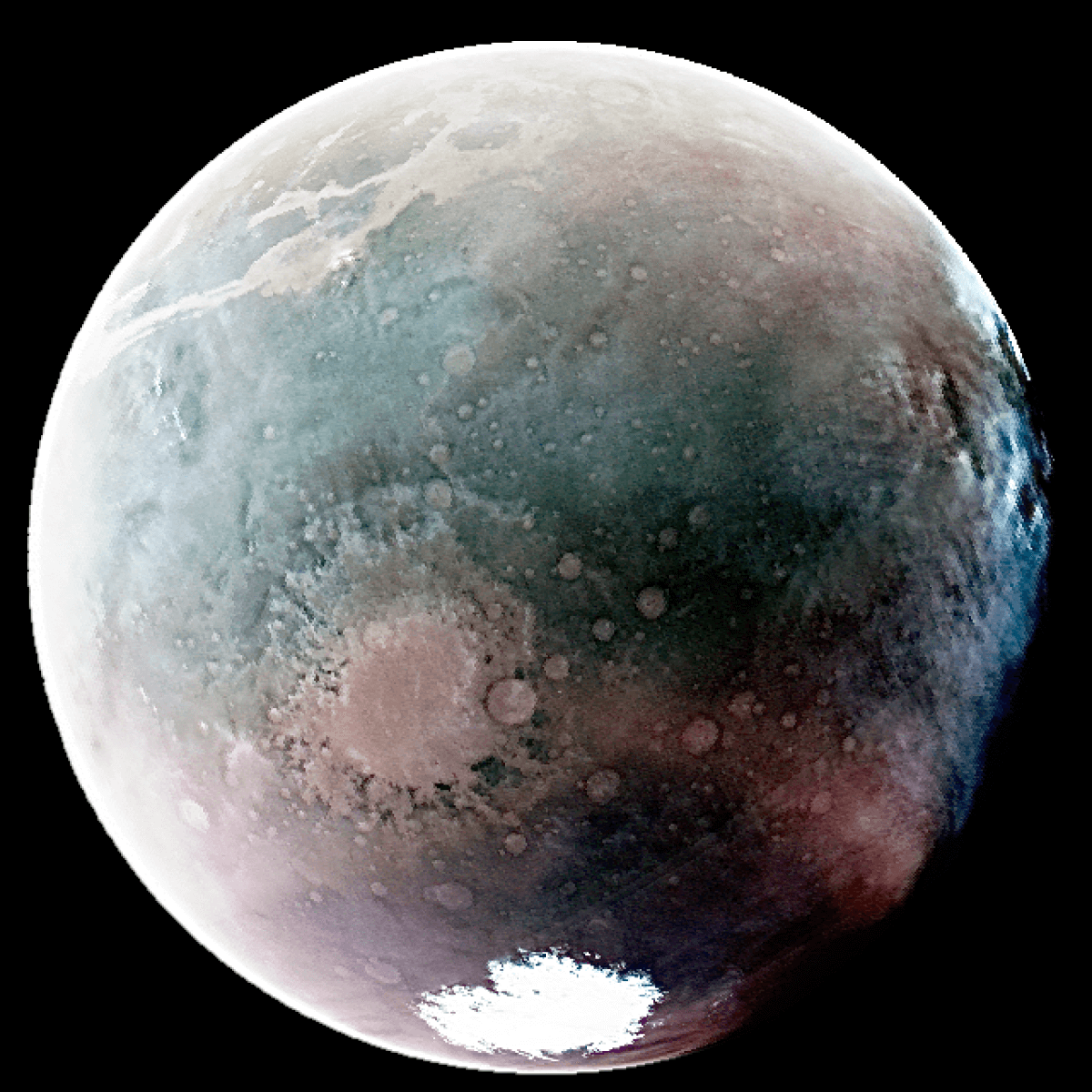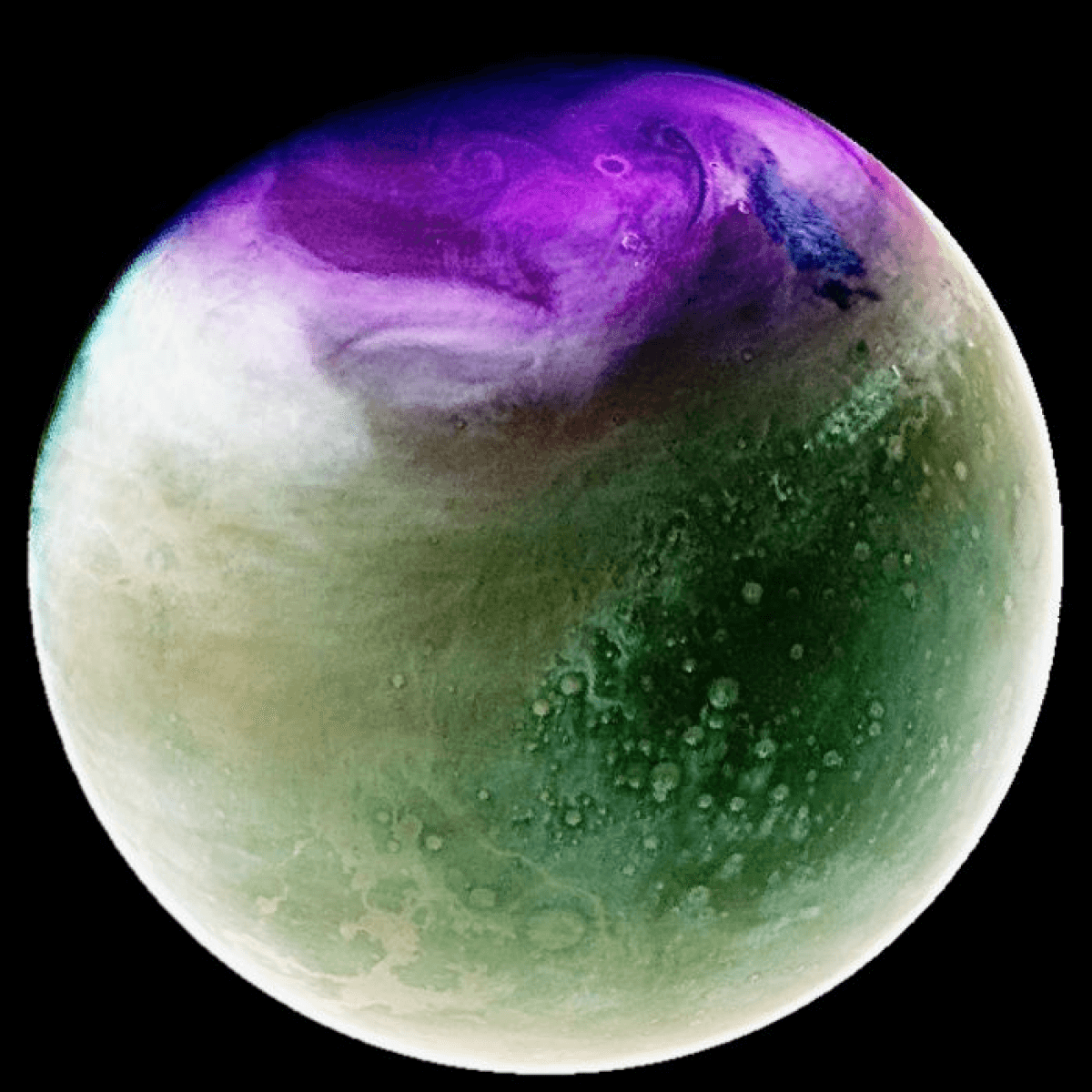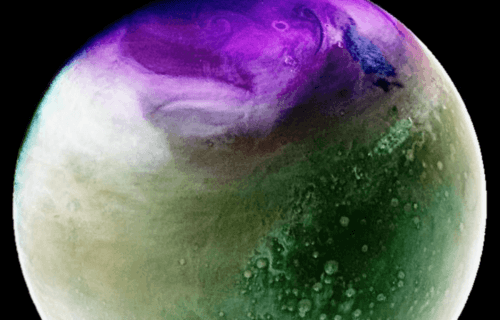WASHINGTON — NASA’s MAVEN (Mars Atmosphere and Volatile EvolutioN) mission has revealed two captivating ultraviolet views of Mars, presenting the famous Red Planet in an entirely new light.
According to the NASA team, these “stunning views” were captured at different positions of Mars’s orbit around the Sun, offering invaluable insights into the Martian atmosphere and novel ways of observing surface features.
The Imaging Ultraviolet Spectrograph (IUVS) instrument aboard MAVEN secured these comprehensive views of Mars in 2022 and 2023, as the planet approached opposite ends of its elliptical orbit. The IUVS instrument works outside the visible spectrum, measuring wavelengths between 110 and 340 nanometers.
To translate these wavelengths into a format comprehensible to the human eye, the images were processed so that the varying brightness levels of three ultraviolet wavelength ranges appear as red, green, and blue. This color-coding allows atmospheric ozone to appear purple, while clouds and hazes look white or blue. The planet’s surface can show up as tan or green, depending on how the images have been optimized for increased contrast and detail.
The first image, taken in July 2022, showcases the Martian summer in the southern hemisphere, which happens when Mars is closest to the Sun. The seasons on Mars, like Earth, are a result of the planet’s axial tilt. In this image, the Argyre Basin, one of Mars’ deepest craters, filled with atmospheric haze, appears at the bottom left in a pale pink hue. At the top left, we see the deep canyons of Valles Marineris filled with tan-colored clouds. The white southern polar ice cap is visible at the bottom, retreating under the warmth of summer. This southern summer warming, combined with dust storms, pushes water vapor to high altitudes, contributing to the increased hydrogen loss from Mars observed by MAVEN.

The second image, captured in January 2023, focuses on Mars’ northern hemisphere, shortly after Mars had passed the farthest point in its orbit from the Sun. The quick-changing seasons in the northern polar region result in an abundance of white clouds. The lower left reveals the deep tan-hued canyons of Valles Marineris, surrounded by various craters. The ultraviolet view shows a build-up of ozone, rendered as magenta, during the chilly polar nights of the northern winter. This ozone is subsequently depleted in the northern spring due to chemical reactions with water vapor, which is restricted to the atmosphere’s lower altitudes during this period.

MAVEN was launched in November 2013 and began its Mars orbit in September 2014. The mission’s objective is to probe Mars’ upper atmosphere, ionosphere, and interactions with the Sun and solar wind to investigate the loss of the Martian atmosphere to space. Such an understanding of atmospheric loss offers insights into Mars’ atmospheric and climate history, the presence of liquid water, and the planet’s potential habitability.
The MAVEN team is preparing to commemorate the spacecraft’s tenth year over Mars in September 2024.
South West News Service writer Dean Murray contributed to this report.

